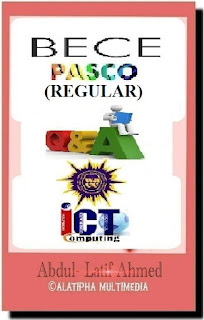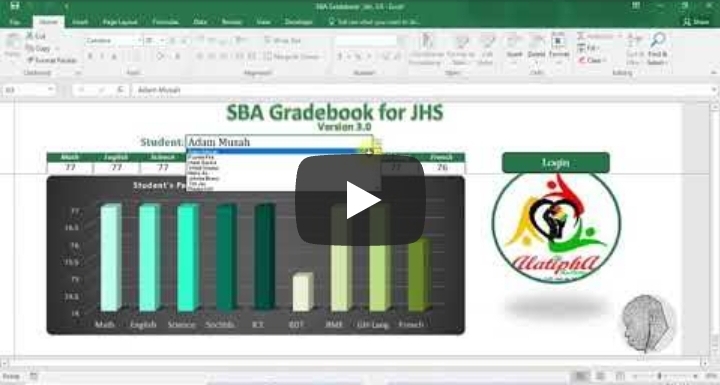Brief History of Smartphones
In 1926, during an interview for "Collier" magazine, legendary scientist and inventor Nikola Tesla described a piece of technology that would revolutionize the lives of its users.
Here’s the quote:
When wireless is perfectly applied, the whole earth will be converted into a huge brain, which in fact it is, all things being particles of a real and rhythmic whole. We shall be able to communicate with one another instantly, irrespective of distance. Not only this, but through television and telephony we shall see and hear one another as perfectly as though we were face to face, despite intervening distances of thousands of miles; and the instruments through which we shall be able to do his will be amazingly simple compared with our present telephone. A man will be able to carry one in his vest pocket.
While Tesla might not have chosen to call this instrument a smartphone, his foresight was spot on. These future phones have, in essence, reprogrammed how we interact with and experience the world. But they didn’t appear overnight. There were many technologies that progressed, competed, converged, and evolved toward the fairly sophisticated pocket companions we have come to rely on.
The Modern Smartphone
So who invented the smartphone? First, let's make it clear that the smartphone didn’t start with Apple—though the company and its charismatic co-founder Steve Jobs deserve much credit for perfecting a model that has made the technology just about indispensable among the masses. In fact, there were phones capable of transmitting data, as well as featured applications such as email, in use prior to the arrival of early popular devices, such as the Blackberry.
Since then, the definition of the smartphone has essentially become arbitrary. For example, is a phone still smart if it doesn’t have a touchscreen? At one time, the Sidekick, a popular phone from carrier T-Mobile, was considered cutting edge. It had a swiveling full-qwerty keyboard that allowed for rapid-fire text messaging, LCD screen, and stereo speakers. In modern times, few people would find a phone remotely acceptable that cannot run third-party apps. The lack of consensus is muddied even further by the concept of a “feature phone,” which shares some of the smartphone's abilities. But is it smart enough?
A solid textbook definition comes from the Oxford dictionary, which describes a smartphone as “a mobile phone that performs many of the functions of a computer, typically having a touchscreen interface, internet access, and an operating system capable of running downloaded apps.” So for the purpose of being as comprehensive as possible, let’s begin with the very minimal threshold of what constitutes “smart” features: computing.
Who Invented Smartphones?
The first device that technically qualifies as a smartphone was simply a highly-sophisticated (for its time) brick phone. You know one of those bulky, but fairly exclusive status-symbol toys flashed in 1980s movies like "Wall Street?" The IBM Simon Personal Communicator, released in 1994, was a sleeker, more advanced, and premium brick that sold for $1,100. Sure, a lot of smartphones today cost about as much, but remember that $1,100 in the 1990s was nothing to sneeze at.
IBM had conceived of the idea for a computer-style phone as early as the 1970s, but it wasn’t until 1992 that the company unveiled a prototype at the COMDEX computer and technology trade show in Las Vegas. Besides placing and receiving calls, the Simon prototype could also send facsimiles, emails, and cellular pages. It even had a nifty touchscreen for dialing numbers. Extra features included apps for a calendar, address book, calculator, scheduler, and notepad. IBM also demonstrated that the phone was capable of displaying maps, stocks, news, and other third-party applications, with certain modifications.
Tragically, the Simon ended up in the heap pile of being too ahead of its time. Despite all the snazzy features, it was cost-prohibitive for most and was only useful for a very niche clientele. The distributor, BellSouth Cellular, would later reduce the price of the phone to $599 with a two-year contract. And even then, the company only sold about 50,000 units. The company took the product off the market after six months.
The Early Awkward Marriage of PDAs and Cell Phones
The initial failure to introduce what was a fairly novel notion of phones having a multiplicity of capabilities didn’t necessarily mean that consumers weren’t keen on incorporating smart devices into their lives. In a way, smart technology was all the rage during the late 1990s, as evidenced by the widespread adoption of stand-alone smart gadgets known as personal digital assistants. Before hardware makers and developers figured out ways to successfully merge PDAs with cellular phones, most people simply made due by carrying two devices.
The leading name in the business at the time was Sunnyvale-based electronics firm Palm, which jumped to the fore with products such as the Palm Pilot. Throughout the generations of the product line, various models offered a multitude of pre-installed apps, PDA-to-computer connectivity, email, messaging, and an interactive stylus. Other competitors at the time included Handspring and Apple with the Apple Newton.
Things started to come together right before the turn of the new millennium, as device makers began slowly incorporating smart features into cell phones. The first notable effort was the Nokia 9000 communicator, which the manufacturer introduced in 1996. It came in a clamshell design that was fairly large and bulky but allowed for a qwerty keyboard, along with navigation buttons. This was so that the makers could cram in some of the more salable smart features, such as faxing, web browsing, email, and word processing.
But it was the Ericsson R380, which debuted in 2000, that became the first product billed and marketed as a smartphone. Unlike the Nokia 9000, it was small and light like most typical cell phones. Remarkably, the phone's keypad could be flipped outward to reveal a 3.5-inch black-and-white touchscreen from which users could access a litany of apps. The phone also allowed for internet access, though no web browser was available and users weren’t able to install third-party apps.
The convergence continued as competitors from the PDA side moved into the fray, with Palm introducing the Kyocera 6035 in 2001 and Handspring putting out its own offering, the Treo 180, the following year. The Kyocera 6035 was significant for being the first smartphone to be paired with a major wireless data plan through Verizon, while the Treo 180 provided services via a GSM line and operating system that seamlessly integrated telephone, internet, and text messaging service.
Smartphone Mania Spreads From East to West
Meanwhile, as consumers and the tech industry in the West were still tinkering with what many referred to as PDA/cell phone hybrids, an impressive smartphone ecosystem was coming into its own across the way in Japan. In 1999, local upstart telecom NTT DoCoMo launched a series of handsets linked to a high-speed internet network called i-mode.
Compared to Wireless Application Protocol, the network used in the United States for data transfers for mobile devices, Japan’s wireless system allowed for a wider range of internet services such as email, sports results, weather forecasts, games, financial services, and ticket booking—all carried out at faster speeds. Some of these advantages are attributed to the use of “compact HTML” or “cHTML,” a modified form of HTML that enables a full rendering of web pages. Within two years, the NTT DoCoMo network had an estimated 40 million subscribers.
But outside of Japan, the notion of treating your phone as some sort of digital Swiss army knife hadn’t quite taken hold. The major players at the time were Palm, Microsoft, and Research in Motion, a lesser-known Canadian firm. Each had its respective operating systems. You might think that the two more established names in the tech industry would have an advantage in this respect. Yet, there was something more than mildly addictive about RIM’s Blackberry devices that had some users calling their trusty devices Crackberries.
RIM’s reputation was built on a product line of two-way pagers that, over time, evolved into full-fledged smartphones. Critical to the company’s success early on was its efforts to position the Blackberry, first and foremost, as a platform for business and enterprise to deliver and receive push email through a secure server. It was this unorthodox approach that fueled its popularity among the more mainstream consumers.
Apple’s iPhone
In 2007, at a heavily-hyped press event in San Francisco, Jobs stood on stage and unveiled a revolutionary product that set an entirely new paradigm for computer-based phones. The look, interface, and core functionality of nearly every smartphone to come along since is, in some form or another, derived from the original iPhone’s innovative touchscreen-centric design.
Among some of the groundbreaking features was an expansive and responsive display from which to check email, stream video, play audio, and browse the internet with a mobile browser that loaded full websites, much like what’s experienced on personal computers. Apple’s unique iOS operating system allowed for a wide range of intuitive gesture-based commands and eventually, a rapidly-growing warehouse of downloadable third-party applications.
Most importantly, the iPhone reoriented people’s relationship with smartphones. Up to then, they were generally geared toward businesspeople and enthusiasts who saw them as an invaluable tool for staying organized, corresponding over email, and boosting their productivity. Apple’s version took it to a whole other level as a full-blown multimedia powerhouse, enabling users to play games, watch movies, chat, share content, and stay connected to all the possibilities that we’re all still constantly rediscovering.


































Comments
Post a Comment